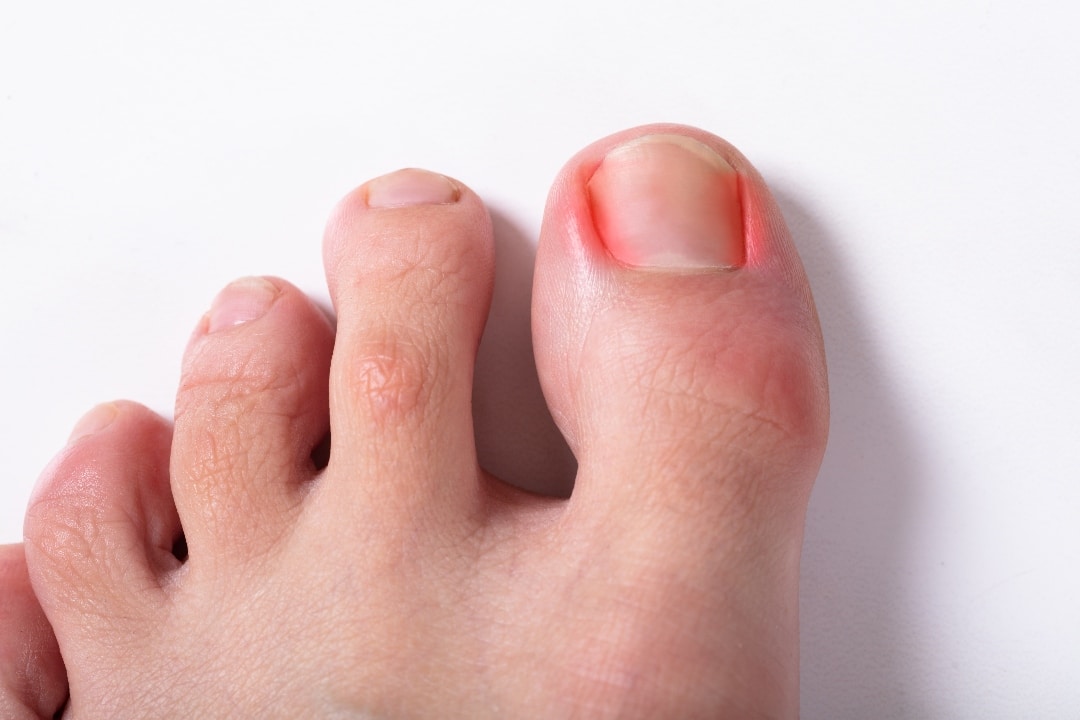Ingrown Toenail Surgery: What to Expect

Ingrown nails occur when one of your nails rubs against or pierces your toe. Without the assistance of a foot professional, the condition, which generally affects the big toe, would only worsen.
Traditional podiatrist treatments are often enough to ease pressure on the affected toe and inhibit aberrant nail development. However, patients with significant pain and decreased movement due to stubborn, severe ingrown toenails may require a little operation to treat the problem entirely.
The most common cause for toenail surgery is to prevent bothersome nails from growing deeper and deeper into the epidermis. Ingrown toenails affect both sexes and people of all ages. Several risk factors range from genetic diseases (such as fan-shaped nails) to environmental causes (restrictive shoes, foot injuries, poor nail-cutting technique, fungal nail infections, etc.).
It’s natural to be worried before any operation, no matter how minor. However, we hope our guide to ingrown nail surgery will set your mind at ease.
Taking Out Some or All of the Affected Toenails
When a patient requires surgery for an ingrowing nail, one of the procedures listed below is performed.
- The problematic section of the toenail (typically a thin strip down one or both sides) is removed in a partial nail avulsion. According to the NHS, the surgery is “a very effective and regularly used operation for treating ingrown toenails.” As a result, the patient has a narrower nail, although the difference in appearance is unlikely to be obvious.
- Total nail avulsion: in difficult situations, the entire toenail is removed (for example, if it has become particularly thick and distorted). The patient has an indentation on the top of the toe, but the lack of the nail is unlikely to hinder foot function.
One of the professional organisations, the Society of Chiropodists and Podiatrists, has created a toenail surgery film. It includes video footage of genuine surgeries and emphasises the importance of ‘carefully and accurately’ performing toenail operations. Unless you’re phobic, watching the video is a good way to understand the procedure.
Reassurances About Ingrown Nail Surgery
Toenail surgery is not something to be concerned about; it is a rather routine treatment. Furthermore, it relieves pain, discomfort, inflammation, and infection.
- You do not need to go to the hospital for ingrown toenail surgery. We perform toenail surgery in our clean, well-equipped podiatry facilities in London.
- A skilled team surround you: your toenail surgery will be performed by one of our experienced podiatrists with the assistance of a nail surgery assistant.
- You will only require a local anaesthetic if you have partial or total nail avulsion. Throughout the procedure, you will be awake and comfortable.
- If the toe is infected, the pus will be drained, and medicines will be prescribed.
- The surgically exposed portion of the nailbed will be treated with the chemical phenol, which stops regeneration of the nail in that location, providing you with long-term relief from the condition.
- You’ll get good aftercare, including advice on changing bandages in the coming weeks and follow-up visits to ensure the toe recovers properly.
Ingrown Nail Treatment by London Foot Specialists
Toenail surgery may appear intimidating, but when performed by a competent podiatrist, it is a rather simple treatment with significant benefits for patients.
We provide complete treatment and follow-up care for ingrown toenail issues. Because of our patient-centred approach, you’ll be kept informed every step of the journey and have plenty of opportunities to ask questions, giving you genuine peace of mind.







